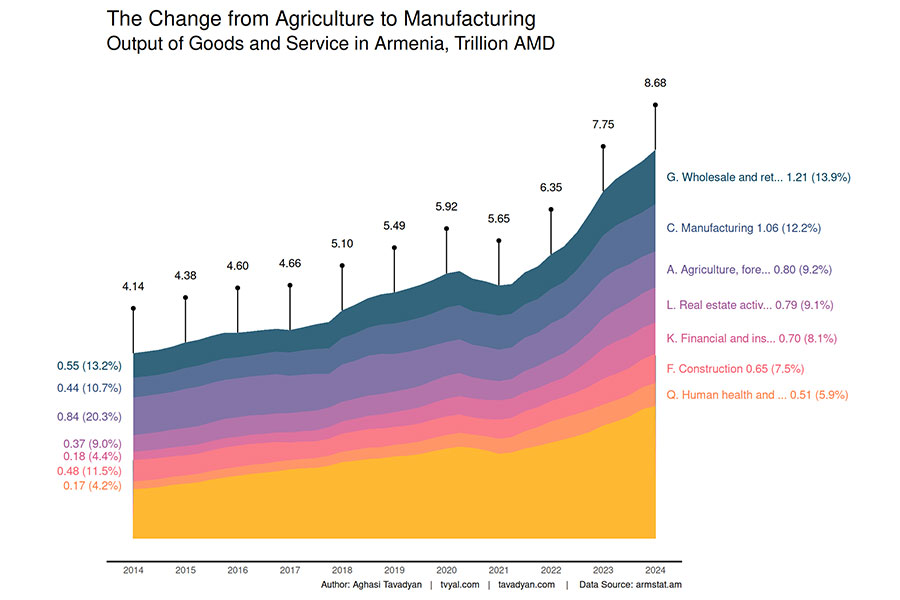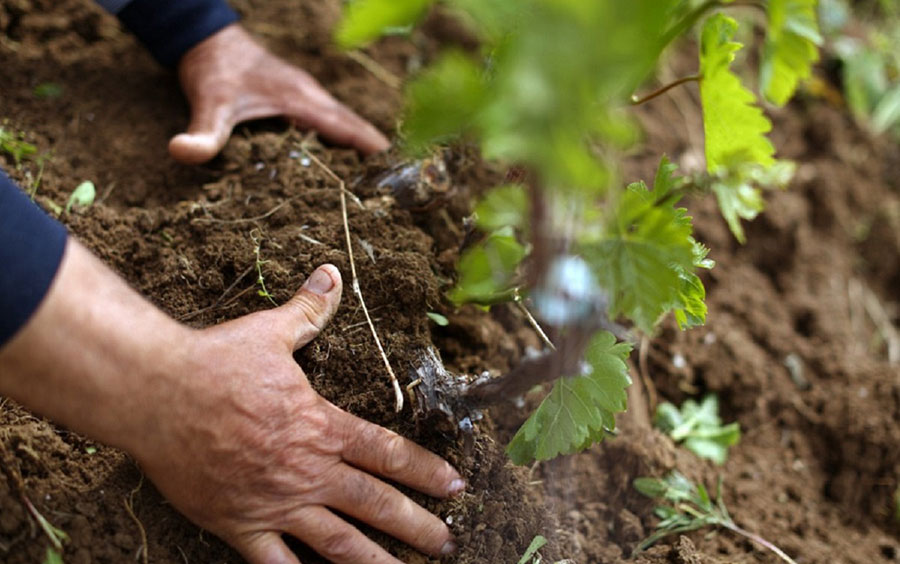Transition from agriculture to consumption economy
Over the past decade, Armenia has experienced significant shifts in its economic landscape, marked by a notable decline in the agricultural sector. While the country’s GDP has more than doubled in this period, reaching 8.68 trillion drams in 2023, agriculture’s contribution to the economy has dwindled from 20.3 percent to 9.2 percent. Despite overall economic growth, agriculture has seen minimal expansion, registering a mere 5 percent growth, while other sectors like industry and wholesale/retail trade have flourished, surpassing agriculture in contribution to GDP. Notably, the construction sector, although seeing nominal growth, has experienced a decrease in its share of GDP, highlighting a shift away from traditional economic pillars.
The dangers of 7 percent economic growth
Concerns arise regarding the sustainability of Armenia’s recent economic growth, particularly given its reliance on sectors like trade and construction, which may not generate long-term added value. Similar periods of rapid growth in the past, such as from 2002 to 2008, were largely driven by external factors and consumption, leading to vulnerabilities when financial inflows ceased. The current economic growth, mainly attributed to external factors, raises fears of a repeat scenario, potentially resulting in economic instability. The government’s ambitious growth targets for 2024, coupled with potential risks associated with relying on external stimuli, underscore the need for structural and qualitative changes to ensure sustainable growth and mitigate financial risks.
Read also


Aghasi Tavadyan



























































